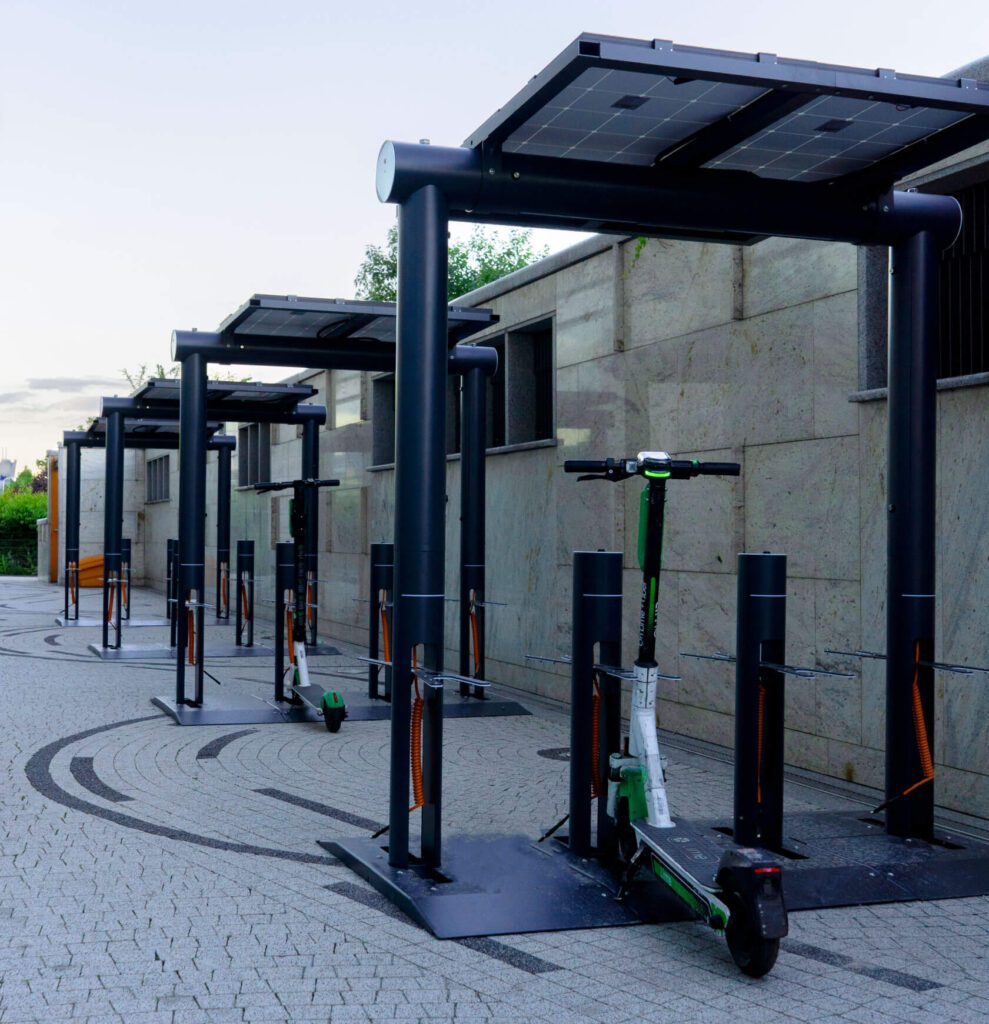Why Does My Electric Scooter Turn On But Not Move? A Comprehensive Troubleshooting Guide
Electric scooters have surged in popularity as a convenient, eco-friendly mode of transportation for urban commuters and casual riders alike. Their compact design, ease of use, and affordability make them an appealing choice for navigating city streets or enjoying a leisurely ride. However, like any vehicle, electric scooters are not immune to technical issues. One of the most frustrating problems riders encounter is when their scooter powers on but refuses to move. The display lights up, the battery appears charged, yet twisting the throttle yields no response. This issue can stem from a variety of causes, ranging from simple settings oversights to complex mechanical or electrical faults. In this comprehensive 2500-word guide, we’ll explore the common reasons why your electric scooter turns on but doesn’t move, provide step-by-step troubleshooting tips, and offer practical solutions to get you back on the road. By the end, you’ll be equipped with the knowledge to diagnose and potentially fix the issue yourself, or know when to seek professional help.
Understanding How Electric Scooters Work
Before diving into troubleshooting, it’s helpful to understand the basic components of an electric scooter and how they interact. Electric scooters operate through a system comprising a battery, motor, controller, throttle, and various sensors. The battery supplies electrical energy, which the controller distributes to the motor. The motor then converts this energy into mechanical power to drive the wheels. The throttle sends signals to the controller to regulate speed, while safety features like brake sensors and kill switches ensure safe operation. Issues with any of these components—or their connections—can prevent the scooter from moving, even if it powers on. Let’s break down the most common culprits and how to address them.
Common Reasons Your Electric Scooter Won’t Move
1. Kick-to-Start or Zero-Start Feature
Many electric scooters are equipped with a safety feature known as “kick-to-start” or “zero-start,” which requires the rider to manually push the scooter to a certain speed (typically 3 mph) before the motor engages. This prevents accidental acceleration, especially for new riders. If your scooter is in this mode, twisting the throttle without kicking off will result in no movement.
Troubleshooting Steps:
-
Check the user manual or the scooter’s display settings to confirm if the kick-to-start feature is enabled.
-
Access the settings menu via the scooter’s display or companion app (if available) and look for options like “Zero Start” or “Kick-to-Start.” You may be able to disable this feature for immediate motor engagement.
-
Test by giving the scooter a gentle push while applying the throttle. If it starts moving, the issue is likely the kick-to-start setting.
Solution: Adjust the settings to disable the kick-to-start feature if desired, or ensure you’re pushing the scooter to the required speed before throttling. Always consult the manual, as some models require this feature to remain active for safety reasons.

2. Low or Dead Battery
A low or degraded battery is one of the most common reasons an electric scooter won’t move, even if it turns on. While the scooter may power on, the battery might not have enough charge to drive the motor under load, especially if you’re riding uphill or carrying extra weight. Batteries can also degrade over time, reducing their ability to hold a charge.
Troubleshooting Steps:
-
Check the battery level on the scooter’s display or use a voltmeter to measure the battery’s voltage. A fully charged battery typically reads around 42 volts for a 36V system (check your manual for specifics).
-
Plug the scooter into its charger and ensure the charger’s indicator light turns on. Charge for the recommended time (usually 4-8 hours).
-
If the battery doesn’t charge, inspect the charger and charging port for damage or loose connections. Test with another compatible charger if possible.
-
For lead-acid batteries, perform a deep charge (48-72 hours) to revive capacity, especially if the battery has been left discharged for months.
Solution: If the battery is low, fully charge it and test again. If the battery is old or damaged (e.g., unable to hold a charge or showing signs of swelling), replace it with a compatible model. Avoid letting the battery fully discharge, and charge it regularly to maintain its health.
3. Faulty Throttle
The throttle controls the scooter’s speed by sending signals to the controller. A loose, damaged, or unresponsive throttle can prevent the motor from receiving the signal to move, even if the scooter is powered on.
Troubleshooting Steps:
-
Inspect the throttle for physical damage, stickiness, or looseness. Ensure it moves freely when twisted or pressed.
-
Use a multimeter to test the throttle’s voltage output (typically 4.5-5V when engaged). If there’s no response or inconsistent readings, the throttle may be faulty.
-
Check the throttle’s wiring connections to the controller for looseness or corrosion.
Solution: Tighten any loose connections or clean corroded contacts. If the throttle is defective, replace it with a compatible unit, following the manufacturer’s guidelines. Avoid using excessive force on the throttle to prevent future damage.
4. Brake Sensor Issues
Most electric scooters have brake sensors that cut power to the motor when the brake lever is engaged, preventing movement while braking. A stuck or malfunctioning brake lever or sensor can trick the scooter into thinking the brakes are applied, disabling the motor.
Troubleshooting Steps:
-
Inspect the brake lever to ensure it returns fully when released. A stuck lever may engage the brake sensor continuously.
-
Check the brake sensor button (usually under the lever) to confirm it’s not stuck or pressed.
-
Test by gently riding the scooter in a safe area and applying the brakes. If the motor doesn’t engage after releasing the brake, the sensor may be faulty.
Solution: Adjust or lubricate the brake lever to ensure smooth operation. If the sensor is malfunctioning, bypass it temporarily (if safe and allowed by the manufacturer) to test, or replace the sensor. Consult a professional if unsure.
5. Motor Malfunction
The motor is the heart of the scooter’s propulsion system. A faulty motor—whether due to worn-out brushes (in brushed motors), loose connections, or internal damage—can prevent the scooter from moving, even if it powers on.
Troubleshooting Steps:
-
Listen for a faint hum or noise from the motor when the throttle is applied. No sound may indicate the motor isn’t receiving power or is damaged.
-
Inspect the motor for visible damage, such as burn marks, melted wires, or overheating signs.
-
Check the motor’s wiring connections to the controller for looseness or corrosion. Use a multimeter to test continuity across the motor’s terminals.
Solution: Tighten loose connections or replace damaged wires. If the motor is faulty (e.g., worn brushes in a brushed motor or internal damage in a brushless motor), it may need professional repair or replacement. Consult the manufacturer or a technician, as motor repairs can be complex.
6. Controller Issues
The controller acts as the “brain” of the scooter, managing power distribution between the battery, motor, and throttle. A malfunctioning controller can disrupt communication, preventing the motor from engaging.
Troubleshooting Steps:
-
Inspect the controller (usually located near the battery or under the deck) for signs of overheating, burnt wires, or loose connections.
-
Use a multimeter to test the controller’s input and output voltages, comparing them to the manufacturer’s specifications.
-
Check for error codes on the scooter’s display, which may indicate a controller issue.
Solution: Tighten loose connections or replace damaged wires. If the controller is defective, replace it with a compatible unit. This task often requires technical expertise, so consider professional assistance.
7. Blown Fuse or Tripped Circuit Breaker
A blown fuse or tripped circuit breaker can interrupt power flow to the motor, causing the scooter to turn on but not move. Fuses protect the electrical system from surges or short circuits, but they can blow due to overloading or overheating.
Troubleshooting Steps:
-
Locate the fuse box (typically near the battery or controller) and inspect the fuse for visible damage (e.g., a broken filament).
-
Use a multimeter to test the fuse’s continuity. If it’s blown, replace it with one of the same rating (e.g., 20-40 Amp, per the manual).
-
Check for a tripped circuit breaker and reset it if applicable.
Solution: Replace a blown fuse with an identical one. If the fuse blows repeatedly, there may be an underlying electrical issue (e.g., a short circuit), requiring professional diagnosis.
8. Kill Switch or Safety Mode
Some scooters feature a kill switch or safety modes (e.g., Eco Mode, Beginner Mode, or Lock Mode) that disable the motor to save energy or prevent unauthorized use. If these are engaged, the scooter won’t move.
Troubleshooting Steps:
-
Check for a kill switch (usually near the handlebars or dashboard) and ensure it’s in the “off” position.
-
Verify if the scooter is in a restricted mode via the display or app. Look for settings like “Eco Mode,” “Beginner Mode,” or “Lock Mode.”
-
Consult the manual for instructions on disabling safety modes or unlocking the scooter.
Solution: Turn off the kill switch or switch to a standard riding mode. If the scooter uses an app, ensure it’s unlocked and updated.
9. Mechanical Issues
Mechanical problems, such as seized wheel bearings, tight brakes, or a damaged belt/chain, can prevent the wheels from turning, even if the motor is powered.
Troubleshooting Steps:
-
Manually spin the wheels to check for resistance or unusual noises, which may indicate seized bearings or debris.
-
Inspect the brake pads and adjust them if they’re too tight, preventing wheel movement.
-
For belt- or chain-driven scooters, check for wear, damage, or misalignment. Ensure proper tension per the manual.
Solution: Lubricate or replace seized bearings, adjust brake pads, or replace a worn belt/chain. If the issue persists, consult a technician for axle or wheel alignment checks.
10. Software or Firmware Issues
Modern scooters often rely on software to manage motor function. Outdated firmware or software glitches can prevent the motor from engaging.
Troubleshooting Steps:
-
Restart the scooter by turning it off, waiting a few seconds, and turning it back on.
-
Check the manufacturer’s website or app for firmware updates. Follow instructions to update the scooter’s firmware.
-
If available, perform a factory reset (consult the manual to avoid voiding the warranty).
Solution: Update the firmware or reset the scooter. If the issue persists, contact the manufacturer for support.
Preventative Maintenance Tips
To minimize the chances of your scooter failing to move, adopt these maintenance practices:
-
Charge Regularly: Avoid deep discharges and charge the battery after each use to maintain its health.
-
Inspect Components: Regularly check wiring, connectors, brakes, and tires for wear or damage.
-
Keep It Clean: Remove dirt and debris from the wheels and undercarriage to prevent mechanical issues.
-
Update Firmware: Stay current with software updates to avoid glitches.
-
Follow Weight Limits: Avoid overloading the scooter, as this can strain the motor and battery.
-
Store Properly: Keep the scooter in a dry, moderate-temperature environment to protect the battery and electronics.
When to Seek Professional Help
While many issues can be resolved at home, some require professional expertise:
-
Persistent electrical issues (e.g., recurring blown fuses or controller malfunctions).
-
Complex motor repairs, especially for brushless motors.
-
Software issues that don’t resolve with updates or resets.
-
Warranty-covered repairs—always check with the manufacturer to avoid voiding coverage.
Contact the manufacturer’s customer support or a certified repair shop for assistance. For example, Pure Electric offers support for their scooters at help@pureelectric.com.
Visual Guide to Troubleshooting
For a visual demonstration of troubleshooting an electric scooter that won’t move, check out this helpful YouTube video: Electric Scooter Troubleshooting Guide. It walks through common checks like battery testing and throttle inspection, complementing the steps outlined here.
Conclusion
An electric scooter that turns on but doesn’t move can be a frustrating issue, but it’s often fixable with systematic troubleshooting. By checking the kick-to-start feature, battery health, throttle, brake sensors, motor, controller, fuses, safety modes, mechanical components, and firmware, you can identify and resolve most problems at home. Regular maintenance and careful riding habits can prevent these issues from arising in the first place. If all else fails, don’t hesitate to seek professional help to ensure your scooter is safe and functional. With the right approach, you’ll be back to enjoying smooth, eco-friendly rides in no time.



